2022
Woon een doctoraat bij of raadpleeg de voorbije verdedigingen
Towards an enhanced understanding of the oxidative ageing mechanisms in bitumen (15/12/2022)
Georgios Pipintakos
- donderdag 15 december 2022
- 15.00 uur
- Stadscampus - Klooster van de Grauwzusters (kapel, Gebouw S, Lange St-Annastraat 7, 2000 Antwerpen)
- Promotoren: prof. Wim Van den bergh & dr. Hilde Soenen
- Faculteit Toegepaste Ingenieurswetenschappen

Abstract
The ageing phenomenon in asphalt and its binding medium, the bitumen, is well documented in the scientific literature with regard to its rheomechanical effects. To understand the ‘whys’ behind these alterations one should seek additionally on the chemistry of bitumen.
This dissertation supports experimentally the hypothesis of an oxidation scheme consisting of a fast and a slow rate-determining phase. This is achieved by utilising various unmodified bituminous binders of different origin of crude source, refinery process and performance both in oxidation kinetics and with standard lab ageing simulations. Next, the fundamental mechanisms for the development of a peculiar microstructure, the bee structures in bitumen, were explored and validated with appropriate techniques. In this dissertation, the hypothesis that the crystallisable compounds in bitumen are the main reason for such structures is adopted, and thus various waxy binders were studied for the effect of lab. Image processing methods allowed to conclude that the bee coverage is reduced upon ageing. Additionally, the oxygenated products as revealed by the ageing mechanisms in bitumen were linked via multivariate statistics to advanced rheological parameters. The dissertation ends with the description of a thermodynamics of irreversible processes model for the fast rate-determining oxidation phase, with the model accounting for reasonable changes of the bitumen’s fractions with oxidation.
All in all, this dissertation provides a deeper scientific insight into the oxidative ageing mechanisms in bitumen and clarifies the relationship between chemical and rheological characteristics, which may contribute as a guideline to a more sustainable road infrastructure in the future.
Joint Communication and Localization for Connected Vehicles (7/12/2022)
Rreze Halili
- woensdag 7 december 2022
- 16.00 uur
- Stadscampus - Hof van Liere, Frederik de Tassiszaal (Prinsstraat 13, 2000 Antwerpen)
- promotoren: prof. Maarten Weyn & dr. Rafael Berkvens
- Faculteit Toegepaste Ingenieurswetenschappen
Orchestrating 5G Edges: Collaborative and Distributed Management and Orchestration of Open Programmable and Virtualized Edge Networks (1/12/2022)
Nina Slamnik-Kriještorac
- donderdag 1 december 2022
- 14.00 uur
- promotoren: prof. Johann Marquez-Barja & prof. Steven Latré
- Faculteit Toegepaste Ingenieurswetenschappen
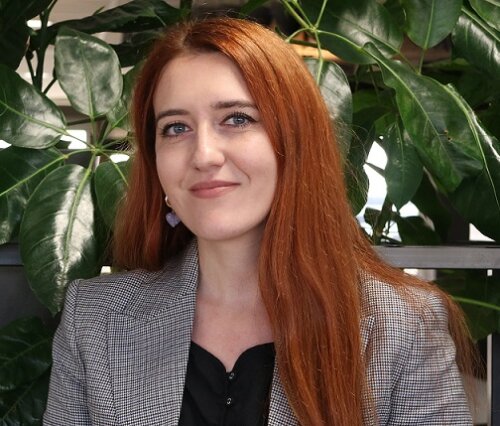
Abstract
Due to the growing demands for transportation in the world, there is an ever-increasing number of vehicles on the roads, which is causing numerous issues, such as traffic jams, car crashes, and fatalities. One of the ways to solve these issues and to make the driving experience safer and more reliable is to equip vehicles with communication capabilities, and to provide them with assistance from the network. This implies an enhanced automotive system, in which a vehicle can talk to the other vehicles, and share information with surrounding infrastructure in a way that could not have been possible in the previous systems.
All of that becomes feasible if, for example, the vehicle can connect to a service running in a close data center, allowing it to make more efficient driving-related decisions. With such an improved decision-making system, services can create recommendations and instructions for the driver and the vehicle, thereby improving the reliability and safety of driving. However, there are some challenges that need to be carefully studied and mitigated. The communication between the service and the vehicle needs to be fast and uninterrupted, and the current network infrastructures cannot meet such requirements. For example, 4G or Wi-Fi, which we are all using daily, cannot offer the speed that we need for this type of communication. That is why in this research we investigated the use of 5G technology to support automotive services that assist vehicles and drivers, and we focused on increasing the efficiency of communication by deploying services closer to the vehicles, at the so-called network edge.
Thus, to make this communication between vehicles and network services fast and reliable, we investigated how to efficiently orchestrate and manage the resources in the whole network of interest, including the network edges where the services are running. Similar to the way an orchestrator sets the pace of all instruments and all musicians in an orchestra, our service orchestrator harmonizes the network resources and service behavior, taking care of the overall health of the service that is assisting the vehicles. In this Ph.D. research, we investigated the technologies that enable communication between cars and services through the network. We proposed and created efficient mechanisms that make intelligent decisions on where exactly to place the service in the network, how to do it, and what is the right timing to move it from one place to another, taking into account the quality of this service but also the movement of the vehicles on the roads. The outcomes of this research are helping to better understand the components of the complex network services that are assisting vehicles and other users (e.g., pedestrians), thereby improving the success of network assistance for vehicles by ensuring a healthy and reliable service operation at the network edges.
One of the main components of this Ph.D. research is its applicability to the next-generation real-world networks and systems, as it has been driven by an active engagement with industry, which resulted in a strong collaboration with several important partners from 5G, automotive, and transport & logistics industries. Moreover, the thesis contributed to the following European projects: H2020 5G-CARMEN, H2020 DAEMON, H2020 VITAL-5G, H2020 5G-BLUEPRINT, and H2020 FED4FIRE+, resulting in five journal papers (published and submitted), 12 publications in conference proceedings (full, work-in-progress, and demo papers; published and submitted), and a book chapter, as a first author, as well as three journals and six conference papers, as a co-author (published and submitted).
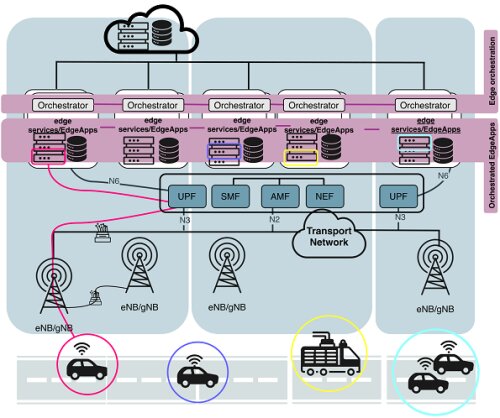
Recycling of plastics: linking technical, economic and policy aspects of post-consumer plastic packaging (16/11/2022)
Macarena Larrain Mac-Lean
- woensdag 16 november 2022
- 17.00 uur
- promotoren: prof. Pieter Billen & prof. Steven Van Passel
- Faculteit Toegepaste Ingenieurswetenschappen

Abstract
The rise in plastic packaging production and disposal has encouraged the progress of recycling technologies and aroused the policy discussion on how to increase recycling rates. However, the effect that these policy instruments will have on the development of the different recycling technologies has not been studied yet. This dissertation explores how new and existing technologies will behave under the market and policy conditions observed at present and after the implementation of the policy instruments that are under discussion.
The technologies that are analyzed in this thesis are mechanical recycling and thermochemical recycling of post-consumer plastic waste. It is mainly focused on polyolefin waste fractions that are commonly sent to incineration or landfilling: polypropylene (PP) bottles and trays, polyethylene (PE) films and mixed polyolefins (MPO), a remaining fraction of the sorting process that contains a mixture of PP and PE rigid plastics. In traditional or mechanical recycling the waste is transformed by physical processes into new plastic granulates. In thermochemical recycling of polyolefins the polymer molecules are broken into smaller molecules producing a hydrocarbon mixture similar to petroleum oil.
By means of a techno-economic assessment that takes into account the physical properties of the different plastic fractions and their contamination level, the study shows that both mechanical and thermochemical recycling can be profitable if oil prices remain steady or increase. Specifically, mechanical recycling shows better results than thermochemical recycling for plastic fractions that are relatively pure, from which high quality products are obtained. On the contrary, thermochemical recycling can treat contaminated and mixed polyolefins, delivering naphtha and waxes similar to virgin alternatives. Therefore, this technology is more profitable for plastic fractions with higher contamination levels.
The thesis later explores the dynamics between the stakeholders of the circular value chain and predicts the recycling rates under the implementation of several policy instruments. This is done with a supply chain equilibrium model that uses as an input the cost structures of mechanical and thermochemical recycling obtained from the techno-economic assessments. The policy instruments that are studied include direct or command and control interventions: recycled content standards, recycling targets and increased collection targets; and market-based or economic interventions: naphtha and packaging taxes and green dot fee bonus.
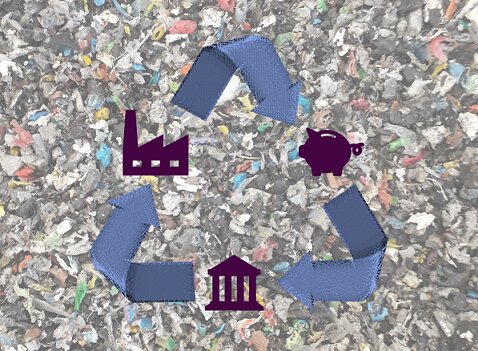
Direct interventions like recycled content standards, have the benefit of decoupling the recycling rates from the oil prices, but in the long term they may not present incentives to achieve recycling levels beyond the targeted amounts and thus limit technological innovation. However, the gradual implementation of increasing targets could allow achieving higher recycling rates. On the contrary, economic interventions such as taxes, create economic incentives for recycling but leave the recycled levels dependent on external market conditions such as oil prices and consumer perception.
In the case of PE films thermochemical recycling is more profitable than mechanical recycling under current market conditions. Therefore, if the policy instrument does not target a specific technology, its implementation will promote thermochemical recycling. Finally, results show that higher recycling rates do not necessarily mean a better environmental performance. Therefore policy makers should carefully analyze weather to target circularity or sustainability.
Alkali-activated binders with reclaimed asphalt aggregates as a potential base layer of pavements (20/10/2022)
Juliana Oliveira Costa
- donderdag 20 oktober 2022
- 15.00 uur
- promotoren: prof. dr. Wim Van den bergh & prof. dr. Johan Blom
- Faculteit Toegepaste Ingenieurswetenschappen
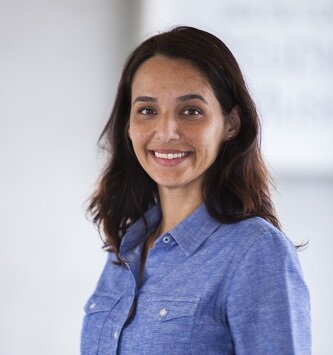
Abstract
We consume vast quantities of construction materials and, at the same time, produce large amounts of construction and demolition waste. The pavement infrastructure is 16.3 million kilometres long worldwide and is, therefore, one of the main consumers of construction materials. More sustainable actions are needed to reduce the impact of this sector.
Reclaimed asphalt pavement, also known as RAP, is a milled granular waste, a product from removing distressed asphalt pavement sections for renovation and can be used as a replacement for natural aggregates (NA). Alkali-activated materials or binders (AAM or AAB), when properly designed are sustainable binding systems resulting from the reaction of an aluminosilicate and an alkaline activator.
This research produced an AAM containing fine and/or coarse RAP aggregates (RAP-AAM) as a replacement for natural aggregates to be used as base layers of pavements. The main objective of this thesis is to determine whether AAM can incorporate high amounts of RAP and be used as pavement base layers without compromising mechanical and durability performance.
During this research, two innovative characterization methods were used as an alternative to those often employed for Portland concrete. Firstly, the observation of the interfacial transition zone (ITZ) was improved by combining a laser scanning confocal microscope (LSCM) and a scanning electron microscope (SEM). The combination of both techniques permitted a better observation of the heterogeneous asphalt coating of the RAP particles, the presence of clusters, and cracks at the border and within the activated matrix. Secondly, the thesis proposes an alternative methodology to observe and quantify the shrinkage of RAP-AAM or any other cementitious materials by employing simplified optical imaging. Although this method only allows for the observation of total shrinkage, it is an almost inexpensive method that could give a clear indication of volume changes over time.
The experimental data demonstrated that an ideal alkali-activated binder composition to produce RAP-AAM lean concrete would have blast furnace slag and 10% metakaolin replacement. The activator would have 8% Na2O and and the used of sodium silicate should be avoided. This selection was based on the minimum activator amount required to reach the target compressive strength for a weak to medium lean concrete (5 to 10 MPa), while also minimizing the shrinkage effect. The durability assessment to freeze and thaw indicated similar performance for RAP-AAM and reference (RAP-Cement). The findings of this research showed that RAP-AAM is a promising material for pavement base layers and more investigation is needed on long-term strength and durability.
Towards stable Cu-Ag bimetallic nanoparticles to boost the electrocatalytic CO2 reduction (7/09/2022)
Lien Pacquets

- woensdag 7 september 2022
- 16.00 uur
- promotoren: prof. dr. Ing. Tom Breugelmans & prof. dr. Sara Bals
- Faculteit Toegepaste Ingenieurswetenschappen
Abstract
The increased emissions of greenhouse gasses results in high atmospheric CO2 concentrations, which is one of the fundaments causing a worldwide climate change. A promising mitigation strategy is the electrochemical conversion of this atmospheric CO2 into chemical compounds which can be further used in industry. The required energy during the electrochemical conversion of CO2 can be provided using renewable energy sources, which is a great opportunity to convert CO2 in a green manner.
In addition, an electrocatalyst is necessary to reduce CO2 more efficiently and depending on which material is used (single metal or multi-metal), different chemicals can be produced. Despite the great research efforts, the behavior of electrocatalysts and more specific multi-metal catalysts is not fully understood.
This PhD focusses on the development and application of multi-metal (Cu-Ag as a benchmark) electrocatalysts for the electrochemical CO2 reduction. As different metals are combined, they can influence each other, enabling the production of various chemical. Control over their synthesis, along with understanding the behavior of such electrocatalysts is essential in order to be able to tune the electrocatalyst towards the desired product. In addition, while operating, these electrocatalysts are affected by CO2 operation conditions. By gathering information about the structure with electron microscopy and combining it with electrochemistry, we try to gain insides into their behavior in order to optimize them for the CO2 reduction.
Integrated capture and electrochemical conversion of CO2 (8/07/2022)
Oriol Gutiérrez-Sánchez
- vrijdag 8 juli 2022
- 16.00 uur
- promotoren: prof. dr. Tom Breugelmans & dr. Metin Bulut
- Faculteit Toegepaste Ingenieurswetenschappen
Abstract
The level of CO2 in the atmosphere is increasing to unprecedented levels leading to a global warming era. Reducing the amount of CO2 from the atmosphere by capturing it is crucial to decrease the effects of climate change and eventually revert it. However, capturing CO2 is costly and inefficient if it cannot be valorised afterwards. Capturing CO2 and utilizing it to produce chemical building blocks within the frame of Carbon Capture and Utilization (CCU) technologies is receiving a lot of attention. In this respect, using alkaline solutions to capture CO2 and the electrochemical CO2 reduction are promising technologies to convert CO2 into valuable products and as such reduce greenhouse emissions while valorising the CO2. However, the capture and electrochemical CO2 conversion have been investigated almost exclusively as separate processes.
A disadvantage is that gaseous CO2 is desorbed and compressed to be fed to the electrolyser, with an important contribution to operational costs. To improve the valorisation, integrating the capture and conversion steps by utilizing the post-capture solution, in the form of bicarbonate, directly as a CO2 source for the electrochemical CO2 reduction is a promising approach. This technology is however limited by low Faradaic efficiencies and partial current densities, being the main reasons for the slow CO2 release rate at the catalytic interphase and the high competition with undesired co-reactions like the Hydrogen Evolution Reaction (HER).
In light of increasing the feasibility of the integrated concept and delivering the know-how of the technology, this doctoral thesis is elaborated, where we provide the necessary background on bicarbonate electrolysis, which enables further research focused on upscaling the integrated concept. Additionally, we have benchmarked a procedure to capture and convert CO2 in one and a single system which, although it is still in its early stages, contributes to a great extend the development of the technology to higher Technology Readiness Level.
Hybride Worst-Case Resource Analyse op basis van Machinaal Leren voor Ingebedde Software en Neurale Netwerken (04/07/2022)
Thomas Huybrechts
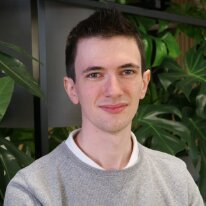
- maandag 4 juli 2022
- 15.30 uur
- promotoren: prof. dr. Peter Hellinckx & dr. Siegfried Mercelis
- Faculteit Toegepaste Ingenieurswetenschappen
Abstract
Ingebedde systemen zijn moeilijk weg te denken in ons dagdagelijkse leven. Deze software gestuurde controllers zitten in allerlei elektronische systemen, zoals auto’s, huishoudtoestellen, slimme sensoren, medische apparatuur, en zoveel meer. In tegenstelling tot onze laptops en smartphones zijn deze systemen gebouwd om gespecialiseerde taken uit te voeren. Dit heeft als gevolg dat er vaak strikte vereisten worden opgelegd op deze systemen, zoals de reactietijd of het energieverbruik. Bijvoorbeeld, het versturen van een email vereist geen harde deadline op de uitvoertijd om succesvol te slagen. Het uitvoeren van een noodstop met de wagen daarentegen kan desastreuze gevolgen hebben indien dit niet tijdig wordt uitgevoerd.
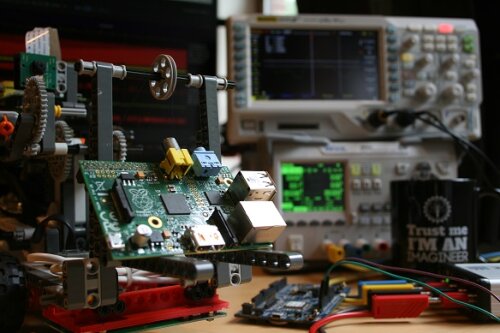
Het gedrag van software is afhankelijk van de input die het krijgt en van de status waarin het systeem zichzelf bevindt. Wanneer we software meermaals uitvoeren, dan gaat het gebruik van systeembronnen, zoals de uitvoertijd en energieverbruik, verschillend zijn tussen verschillende metingen. Bij het ontwerpen van deze systemen is het zeer belangrijk dat het gedrag volledig voorspelbaar is in elke situatie. Om een goede werking te garanderen moet dit gedrag in de ‘worst-case’ scenario bepaald worden, ofwel de ‘worst-case resource consumptie’ genoemd. Het bepalen van het ‘worst-case’ gedrag is dus cruciaal in de ontwerpfase om aan te tonen dat het systeem veilig en correct zal werken zoals deze ontworpen is.
Het bepalen van de ‘worst-case resource consumptie’ vereist veel tijd en moeite door de complexe analyse en modellering van de hardware en software interacties in het systeem. In deze thesis werd een hybride methodologie uitgewerkt die met behulp van ‘machine learning’ in staat is om voorspellingen te maken van de ‘worst-case’ uitvoertijd en energieverbruik op ingebedde systemen. Deze techniek biedt sneller inzicht in het gedrag van het systeem tijdens het ontwerpproces zonder complexe statische modellering of tijdrovende fysieke metingen.
Building Energy Efficient IoT Applications using Low Power Wide Area Networks (22/06/2022)
Ritesh Kumar Singh
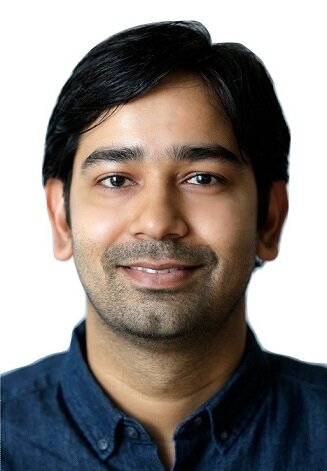
- woensdag 22 juni 2022
- 17.00 uur
- promotoren: prof. Maarten Weyn & dr. Rafael Berkvens
- Faculteit Toegepaste Ingenieurswetenschappen
Abstract
In recent years, the Internet of Things (IoT) is recognized as one of the most important areas of future technology and is gaining vast attention from many applications. The goal behind IoT is to connect all devices such as cars, appliances, equipments, and empower the capability to self-report in real-time. This improves efficiency in different applications such as - smart homes, healthcare solutions, smart cities, and smart agriculture. For many of these applications, the lifetime of IoT device is an essential aspect. It implies the focus on: "How much energy is available? Furthermore, how much energy is being used for smooth behavior and service of IoT device?". It becomes even more crucial with the recent report from EU cordis research, stating that about 78 million batteries powering IoT devices will be dumped globally every day by 2025 if nothing is done to improve their lifespan. Hence, there is a growing need to optimize energy consumption and prolong the lifetime of IoT device.
One of the significant applications of IoT is agriculture, which is facing ever-increasing pressure to feed the world. This demand and supply gap is getting further burdened due to land and water shortages and the global requirement to preserve natural resources. The demand builds inevitable pressure on farmers, resulting in different sources of stress such as plunging commodity prices, increasing debt, and usage of chemicals. IoT ecosystem carries a high potential in the sphere of agriculture to transform in several aspects, primarily by lowering the production risks. By using various smart devices, farmers can predict better with an improved efficiency that promotes sustainable growth while cutting resources.
In this doctoral research, I explore the possibilities of building an energy efficient IoT application using different techniques. I worked on the development of IoT application for precision agriculture in making greenhouse horticulture more efficient and innovative. By extensive deployment of this IoT solution in multiple greenhouses, I realized the challenges, opportunities, and significance of fusing multidisciplinary technologies for building an efficient solution. As a result, research that has been conducted in the past four years by me will give researchers and developers a better understanding of how to build an energy-efficient IoT application, considering the real-time challenges majorly for the use-case of precision agriculture. The published datasets that resulted from greenhouse deployment campaigns will also support the research community with tools to evaluate their methods. In the long run, an energy efficient IoT solution can transform our everyday lives for a better world by promoting growth and protecting the planet.
Synthesis of new nano metal-organic frameworks with urea and thiourea ligands and investigation of their application in sensing, catalysis, and removal of hazardous materials (9/05/2022)
Leili Esrafili Dizaji

- Maandag 9 mei 2022
- 13.00 uur
- promotor: prof. Christophe Vande Velde, samen met prof. Ali Morsali & prof. Pegie Cool
- Faculteit Toegepaste Ingenieurswetenschappen
Abstract
Everybody today has heard about the increasing need of having cheap, environmentally sustainable and green processes. Metal-organic frameworks (MOFs) are organic (made of carbon atoms)-inorganic (molecules other than organic molecules) crystalline porous materials that consist of metal ions surrounded by organic molecules. The synthesis of MOFs is almost like making Legos, organic and inorganic building blocks assemble and construct a sponge type 3D network. Researchers have synthesized MOFs that feature a surface area of more than 7800 square meters per gram. To put this into context, the available surface area in a teaspoon of this material (around a gram of solid), would cover an entire soccer field. By making MOFs from different metal atoms and organic linkers, we were able to create materials that selectively absorb or detect specific molecules into tailor-made pockets within the structure or catalyse a specific chemical reaction. The advantages of our materials are immense: uniform, reproducible and controllable manufacture, and the possibility to completely engineer all Lego bricks. As a consequence, we can control the whole network structure: we can personalize it, giving new properties to the walls, and tuning the pore size. In this thesis I have designed and synthesized a series of MOFs with different organic functional groups (here Lego bricks) and used them as catalysts, heavy metal adsorbents and sensors. Compared with other conventional porous structures that have been used these 3D structures showed high efficiency and selectivity. The various examples in my thesis will represent you there is much room for research to explore new materials and exploit new territories for potential applications.
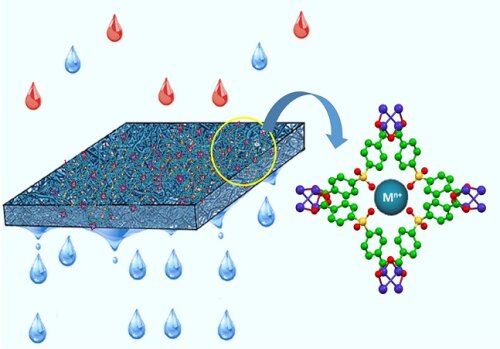
Development Of Electrochemical Reactors For CO2 Electrolysis (29/03/2022)
Miguel Duarte
- Dinsdag 29 maart 2022
- 16:00 uur
- Promotors: prof. dr Tom Breugelmans & dr. Jonas Hereijgers
- Campus Drie Eiken - lokaal D.O.01
- Graag online registreren vóór 22 maart 2022
- Faculteit Toegepaste Ingenieurswetenschappen
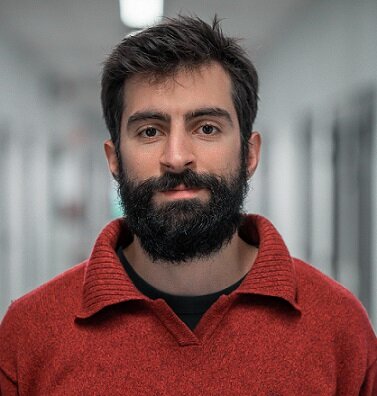
Abstract
Removal of atmospheric CO2 or its capture from point sources and subsequent utilisation might play a relevant role in the mitigation of climate risks generated by increasingly impactful anthropogenic activity. The electrochemical reduction of captured CO2 allows to store electrical energy in the form of carbon-based products, substituting petrochemical processes. Furthermore, it offers the possibility of tuning the reaction for several products, from simple C1 compounds such as carbon monoxide and formate to more complex C2+ chemicals such as ethylene, ethanol or propanol. This dissertation aims at advancing the knowledge on the scalability of CO2 electrolysis towards carbon monoxide and formate, products which are closest to industrial implementation due to their lower energy requirements. With that goal, the focus is centred on the challenges hampering its industrial implementation, i.e. the poor stability of the gas diffusion electrodes and the prohibitive cost of state-of-the-art catalysts.
Concerning reactor engineering, the two most relevant electrolyser classifications – three-compartment flow reactors and zero-gap reactors – are scrutinised. While the former allows for the possibility of accurate cathodic potential control for electrocatalytic study, the latter minimises ohmic losses and optimises its energy efficiency due to its compact structure. The research conducted fine-tunes several critical reaction parameters and optimises the energy efficiency and stability of a scalable reactor. Regarding catalyst development, this dissertation analyses the performance of catalysts based on cheap and abundant materials, at industrially relevant current densities, as an alternative to state-of-the-art noble metal nanoparticles. Nickel-nitrogen-doped carbons are shown to be suitable catalysts for the production of carbon monoxide as well as tin-nitrogen-doped carbon catalysts for the production of formate.
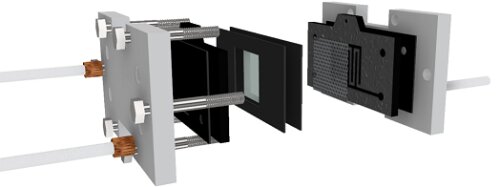
The conclusions of the research conducted reveal a promising future in the conversion of captured CO2 into useful products. Utilising only this waste molecule, alongside water and electrical energy, we may soon be able to efficiently produce important feedstocks for the chemical industry or for fuel cell applications. This is especially relevant in the context of rising CO2 atmospheric concentrations and the urgent need to electrify chemical processes.
Engineering aspects for the electrochemical CO2 reduction to formate (17/03/2022)
Bert De Mot

- donderdag 17 maart 2022
- 16:30 uur
- Campus Drie Eiken - D.O.04
- promotor: prof. dr. Tom Breugelmans
- Faculteit Toegepaste Ingenieurswetenschappen
Abstract
Koolstof is de basis waarop veel deeltjes die we in onze maatschappij gebruiken gebaseerd zijn. Denk hierbij bijvoorbeeld aan plastiek, benzine of zelfs kleding. Momenteel worden zeer vaak fossiele koolstofbronnen zoals aardolie of aardgas aangeslagen als grondstof voor de vervaardiging van deze deeltjes. Het gebruik van deze fossiele koolstof bronnen en de daarbij horende uitstoot van CO2 brengt een enorme belasting mee op onze planeet. Het zou beter zijn om deze uitgestoten CO2 terug te hergebruiken, want CO2 oftewel koolstof dioxide kan namelijk ook gebruikt worden als bron voor koolstof. Door CO2 als grondstof te gebruiken kunnen we onze maatschappij onafhankelijk maken van fossiele koolstof bronnen en hun negatieve effecten op het milieu terug draaien. Echter is dit niet zo vanzelfsprekend, CO2 is namelijk een heel stabiel deeltje dat niet graag reageert of omgezet wordt. In de chemische industrie wordt dit conventioneel opgelost door het aanleggen van hoge temperaturen en drukken, maar zelfs hiermee bereiken we niet het gewenste effect. In ons onderzoek hebben we gezocht naar een alternatief, namelijk de elektrochemische reductie van CO2.
In dit proces gebruiken we geen hoge temperaturen, drukken of vervuilende chemicaliën om CO2 om te zetten, maar gaan we elektriciteit gebruiken. Deze elektriciteit, afkomstig van hernieuwbare bronnen zoals zonnepanelen en windmolens zal het CO2 deeltje de nodige energie geven om verder te reageren naar nieuwe deeltjes zoals mierenzuur (vaak gebruikt in kuisproducten), ethyleen (het basis deeltje om plastiek te maken) en syngas (hiermee kunnen brandstoffen gemaakt worden). Over de laatste decennia is er veel onderzoek verricht naar dit innovatief proces als alternatief voor het gebruik van fossiele grondstoffen. Hierbij werd voornamelijk gekeken naar de geschikte katalysator om de omzetting van CO2
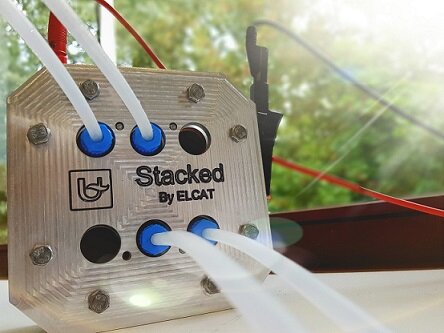
In de afgelopen vier jaar van mijn onderzoek hebben wij ons hier op toegespitst. Zo hebben we bestudeerd hoe de CO2 efficiënt als gas in de reactor gevoed kan worden. Wat de invloed is van de samenstelling van de verscheidene reactor onderdelen (zoals het membraan, de elektrodes en het elektroliet) op het proces. En welke proces parameters (temperatuur, stroom snelheid en bevochtiging van de gasstroom) belangrijk zijn om de omzetting van CO2 onder de meest optimale omstandigheden uit te voeren. Telkens met als einddoel de stap richting industriële implementatie van de technologie.
Aan het einde van het onderzoek zijn we er in geslaagd om reeds een grote stap richting opschaling te zetten, waarbij we een uiterst efficiënte en eenvoudig op te schalen reactor gerealiseerd hebben voor de omzetting van CO2 naar mierenzuur. De resultaten waren zo veelbelovend dat ze rechtstreeks geleid hebben tot de oprichting van een spin-off bedrijf, Oxylum, welke het doel heeft om de technologie verder klaar te maken voor de industrie.
Gaze-based Human-Robot Interaction And Task Learning (07/02/2022)
Lei Shi
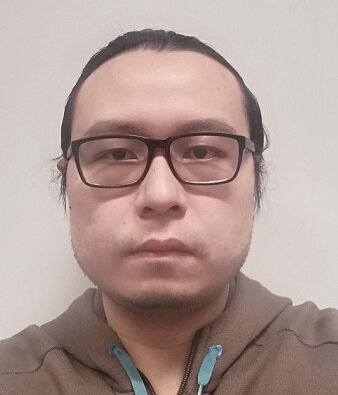
- Maandag 7 februari 2022
- 17.00 uur
- Promotors: prof. dr. Steve Vanlanduit & dr. Cosmin Copot
- Faculteit Toegepaste Ingenieurswetenschappen
Abstract
Traditionally, robots are used in industrial environments where the robots sit in working cells and executing different tasks. With the fast development in robotics, there are more and more scenarios where humans and robots co-exist. For instance, a human is doing assembly work with a robot in a workstation, humans and robots work together in warehouses, a robot organizes shelves in a supermarket, and so on. This requires modern/future robots to have enough intelligence to understand human’s instruction and to be able to understand human’s actions and activities based on its observation. Thus the robots can interact with human in a natural and intelligent way.
This thesis focuses on the gaze-based Human-Robot Interaction (HRI). First, we want the humans be able to communicate with robot by their eyes. Eye tracking glasses provide the human gaze in real time, we develop a method which allows humans to refer an object by looking at the object and the robot can pick it up for the human. Humans can also control robots by gaze gesture (defined eye movements), we propose a novel method to recognized human gaze gestures. Additionally, we use gaze as an additional modality to recognize human actions and develop an approach to predict what task or activity a human is performing. In this way, the robot can understand what a human is doing and it could help the human by finishing one of the actions in the activity. Furthermore, we consider one of the safety issues in HRI. We introduce a method based on artificial intelligence for human hands avoidance when a human is closely working around a robot. It allows the robot to move away from human hands when they are too close to the robot and keep the efficiency of the robotic task at the same time.
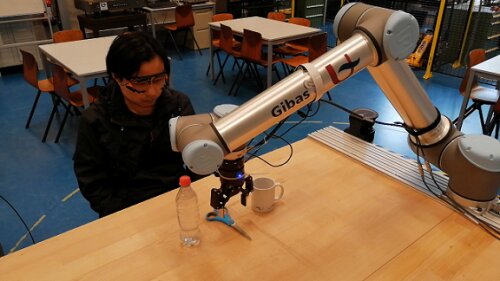
The research are applicable in various fields. When a human is assemble parts in a workstation, different tools e.g. screw drivers, wrenches are needed during the process, the human can look at the tool needed for next steps and tell the robot to get it instead of getting it by himself/herself. The robot is also observing the human worker during the assembly task, it can learn the task and do one of the future actions for the human without the human telling it to do so. The technology is not limited to the industrial setting, it is also applicable for daily activity such as making coffee, preparing meal. The humans can instruct the robot to pick up ingredients, kitchen utensils, and the robot is also learning and predict what a human is doing so it can help the human with the activity.
Localization with Low Power Wide Area Networks (31/01/2022)
Michiel Aernouts
- maandag 31 januari 2022
- 16.00 uur
- promotoren: prof. dr. Maarten Weyn & dr. Rafael Berkvens
- Faculteit Toegepaste Ingenieurswetenschappen
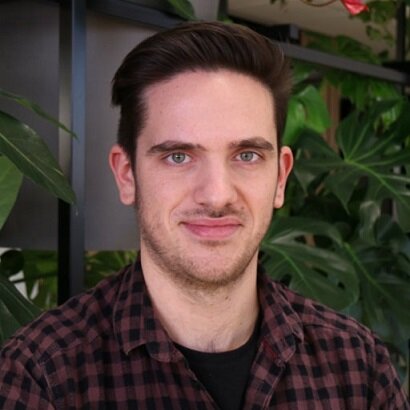
Abstract
We kunnen ons tegenwoordig nog nauwelijks een wereld zonder lokalisatie voorstellen. Reizen naar een plaats waar je nog nooit bent geweest, de beste restaurants in de buurt vinden, de huidige locatie achterhalen van dat pakketje waar je al drie weken op wacht, het kan allemaal met slechts een paar klikken op onze smartphones of computers. Vaak krijgen we deze informatie via een Global Navigation Satellite System (GNSS), zoals Global Positioning System (GPS) of Galileo. Deze systemen zijn alomtegenwoordig in toestellen die we in ons dagelijks leven gebruiken, zoals onze smartphones, smartwatches en auto's.
De vraag naar locatie-informatie neemt ook snel toe in het zogenaamde Internet of Things (IoT). Het doel van IoT is om allerlei dagdagelijkse objecten met elkaar te verbinden, gaande van sensoren op mobiele containers tot vuilnisbakken in een stad. Low Power Wide Area Networks (LPWANs) spelen een zeer belangrijke rol bij de communicatie van de metingen van zulke objecten naar een eindgebruiker, aangezien een LPWAN vaak verantwoordelijk is voor de draadloze verbinding tussen deze objecten. Een gebruiker wil uiteraard ook weten waar zijn objecten zich bevinden om de ontvangen metingen te kunnen interpreteren. Vandaar de behoefte aan lokalisatie in het IoT.
Een belangrijke beperking voor communicatie- en lokalisatieoplossingen is dat ze zo energie-efficiënt mogelijk moeten zijn, omdat IoT-toestellen meestal meerdere jaren moeten werken op kleine batterijen. Dit werpt de vraag op of het toevoegen van GNSS-hardware aan een IoT-toestel de beste oplossing is om locatie-informatie voor dat toestel te verkrijgen. Een alternatieve lokalisatie-oplossing kan worden gevonden in de draadloze LPWAN-communicatielink die in vele gevallen sowieso aanwezig is op een IoT-toestel. Signaalkenmerken zoals de ontvangen signaalsterkte (RSS) of tijdsmetingen maken GNSS-loze lokalisatiemethodes mogelijk. Er is echter onderzoek nodig om inzicht te krijgen in de nauwkeurigheid van deze methoden wanneer ze worden toegepast op een LPWAN. Met dit inzicht zullen ontwikkelaars in staat zijn om een weloverwogen keuze te maken tussen GNSS en GNSS-loze lokalisatie voor hun eigen IoT-toepassingen.
Deze thesis streeft ernaar deze inzichten te verkrijgen door gebruik te maken van echte LPWAN-metingen in plaats van simulaties en theoretische analyses. Ik begon mijn onderzoek met het verzamelen van LPWAN datasets in grote stedelijke en landelijke gebieden. Deze datasets hebben meermaals hun waarde bewezen, niet alleen voor mijn eigen werk, maar ook voor dat van andere onderzoekers. Ik heb mijn onderzoek daarna voortgezet met een analyse van de nauwkeurigheid die kan worden bereikt in LPWAN-implementaties die niet geoptimaliseerd zijn voor lokalisatie. Meer bepaald evalueerde ik meerdere RSS-gebaseerde lokalisatiemethodes in een stedelijk gebied. Vervolgens evalueerde ik of er significante verbeteringen kunnen worden bereikt als een LPWAN in datzelfde stedelijk gebied geoptimaliseerd zou zijn voor lokalisatie. Daartoe installeerde ik mijn eigen LPWAN-infrastructuur en experimenteerde ik met probabilistische combinaties van Time Difference of Arrival (TDoA) en Angle of Arrival (AoA) lokalisatie.
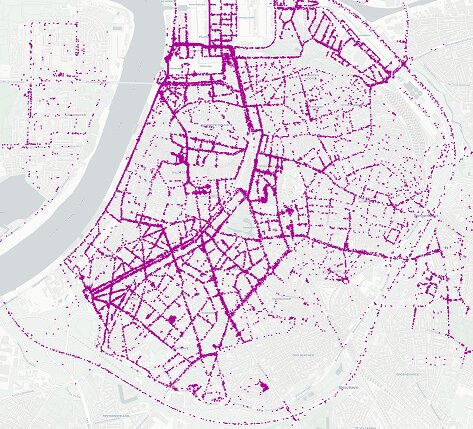
De laatste hoofdstukken van mijn thesis nemen de inzichten van deze experimenten in overweging om het potentieel van LPWAN-lokalisatie in het IoT-landschap te definiëren. Ik analyseer hoe een ontwikkelaar kan kiezen tussen GNSS en GNSS-loze lokalisatie, rekening houdend met de balans tussen technologische beperkingen en applicatievereisten zoals locatienauwkeurigheid, update rate en levensduur van de batterij. Verder beschrijf ik hoe LPWAN-lokalisatie kan worden toegepast in een multimodale setting, waar verschillende technologieën en methoden worden toegepast om te voldoen aan de dynamische vereisten van IoT-toestellen die zich tussen verschillende omgevingen verplaatsen.